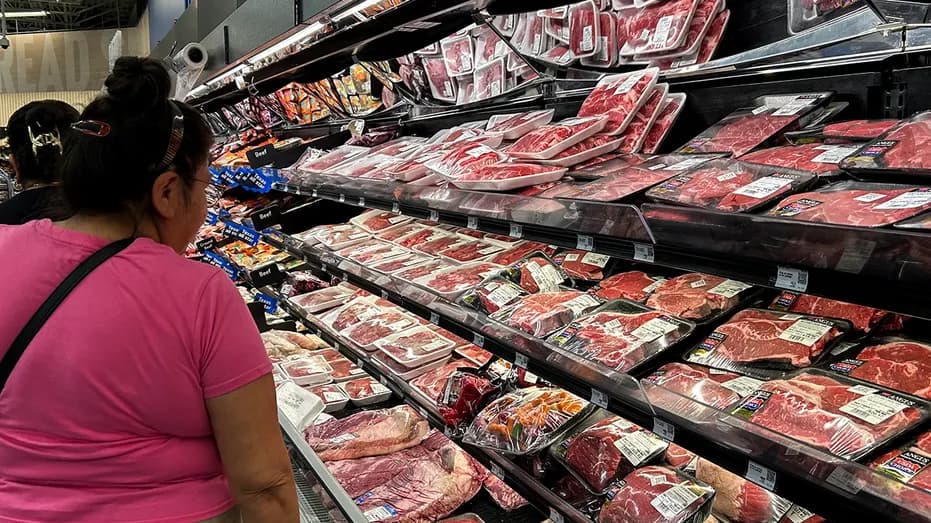We're loading the full news article for you. This includes the article content, images, author information, and related articles.
Record-high beef prices in the United States, driven by a confluence of drought, industry consolidation, and shrinking cattle herds, are creating a political challenge for Donald Trump.

WASHINGTON D.C. – A dramatic surge in beef prices across the United States has escalated into a significant political issue, compelling former President Donald Trump to publicly address the soaring costs that threaten his promises of bringing down grocery bills for American families. The national average price for ground beef has climbed significantly, part of a broader trend that has seen all beef and veal prices jump by over 11% in the past year, according to the U.S. Bureau of Labor Statistics.
This price inflation is rooted in a complex interplay of factors that have squeezed the American cattle industry. The U.S. cattle inventory has plummeted to its lowest level in over 70 years, a stark statistic reported by the U.S. Department of Agriculture (USDA). As of January 1, 2025, the total number of cattle and calves on U.S. farms was approximately 86.7 million head, a notable decrease from previous years.
A primary driver of the herd reduction is prolonged and severe drought conditions, particularly in key cattle-producing states like Texas. These droughts, exacerbated by climate change, have decimated pastures and driven up the cost of feed, forcing many ranchers to make the difficult economic decision to cull their herds. The Federal Reserve Bank of Kansas City noted in a 2023 report that as drought intensity increases, average herd size declines, leading to a temporary increase in revenues from sales but long-term negative effects on farm incomes.
Compounding the environmental pressures is the long-term trend of consolidation within the U.S. meatpacking industry. A handful of large corporations now control a vast majority of the market, with some estimates suggesting the top four firms process over 80% of the nation's beef. This concentration gives these processors significant power over the prices paid to ranchers, who argue they are being squeezed by both high input costs and low sale prices for their livestock, even as consumer prices soar. The number of cattle ranches has fallen by 17% since 2017, a loss of more than 150,000 operations, according to the Agriculture Department.
Further tightening supply, the USDA restricted cattle imports from Mexico due to an outbreak of the New World screwworm parasite, and tariffs have impacted the flow of beef from other countries like Brazil.
In response to the political pressure, former President Trump has floated several proposals. He has publicly urged ranchers to lower their prices and suggested increasing beef imports from Argentina, potentially quadrupling the current quota from 20,000 to 80,000 metric tons. These suggestions have been met with fierce opposition from American cattle producers. The National Cattlemen's Beef Association (NCBA) criticized the plan, arguing it would create chaos for domestic producers without providing meaningful relief for consumers at the grocery store.
Economists and industry analysts are skeptical that these measures will have a significant short-term impact on retail prices. They point out that rebuilding the national herd is a multi-year process, as it takes approximately two years to raise a calf to market weight. Therefore, even with ideal conditions, a substantial increase in domestic beef supply is not imminent.
For Kenya, the direct impact of soaring U.S. beef prices is currently limited. Kenya's beef imports are relatively low and primarily sourced from regional partners and other countries, not the United States. According to Selina Wamucii, a platform for food and agricultural products, the retail price for beef in Kenya in October 2025 is approximately $1.95 to $3.90 per kilogram, significantly lower than the U.S. average. The Kenyan beef market is projected to see steady, albeit modest, growth driven by domestic factors like population increase and rising incomes.
However, the situation in the U.S. serves as a critical case study in the vulnerabilities of global food supply chains. Extreme weather events and market concentration are global challenges. While Kenya is not a major importer of U.S. beef, the U.S. Meat Export Federation has been actively working to expand markets across Africa, including for variety meats. Any significant shifts in global trade dynamics, such as the U.S. increasing imports from South America, could indirectly influence international market prices and trade flows over the long term.
The high prices in the U.S. underscore the importance of resilient and sustainable local livestock sectors. For East Africa, which frequently faces its own challenges with drought and food price volatility, the events in the American market are a reminder of the complex global forces that can impact food security and economic stability.
Keep the conversation in one place—threads here stay linked to the story and in the forums.
Other hot threads
E-sports and Gaming Community in Kenya
Active 6 months ago
Popular Recreational Activities Across Counties
Active 6 months ago
The Role of Technology in Modern Agriculture (AgriTech)
Active 6 months ago
Investing in Youth Sports Development Programs
Active 6 months ago